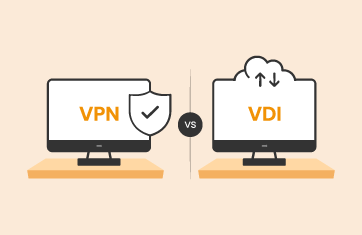[Read part 1] | [Read part 2]
Here is the final post of our 3-part series about virtual desktop performance:
Best Practices for VDI Success
Based on the earlier discussion, we can conclude that for VDI success, you need to:
- Build performance assurance early into the VDI life cycle. For successful deployments, focus on the virtual desktop infrastructure, not just the virtual desktop. Build performance assurance early in the deployment life cycle in order to avoid costly issues and re-mediation downstream, and to mitigate the risk of VDI failure during deployment. It is imperative that IT considers inter-desktop dependencies from the very beginning. When deploying VDI on a large scale, avoid slow, manual ad-hoc processes not only for the deployment but also for performance assurance. Automation is a key to being able to be alerted to problems in advance, well before users notice and complain.
- 360-degree visibility is key. Today, service delivery is more demanding than ever. Companies require 360-degree VDI service visibility of every layer, every tier of the infrastructure ‒ from desktops to applications and from network to storage. The virtual desktop where user applications run is often a blindspot and VDI service managers require the ability to look inside the virtual desktop to understand user activity and the performance they are seeing. It is critical to be able to get this level of visibility without needing to install agents on each and every desktop.
Often, different tools are used for monitoring each of the VDI tiers. This leaves a lot of room for finger-pointing between domain administrators. Having the ability to monitor all the different tiers from a single unified console and being able to analyze the performance of these tiers from a single console, across a common time window, is a key to effective management of the virtual desktop infrastructure.
- Manage VDI as a service, not as many silos. Administrators need deep insights into the causes of VDI service performance issues in order to detect and fix root-cause problems. It’s no longer useful to monitor individual silos because of the complexity of today’s infrastructures. There are just too many opportunities for problems. Also, bear in mind that VDI service managers are not likely to be experts in each of the technologies used in the infrastructure. Therefore, it’s essential that they have access to management solutions that can intelligently analyze and correlate between problems at different tiers and help them quickly pinpoint where the root-cause of problems lie. Since the virtualization platform is an integral part of the infrastructure, the management solution must be virtualization-aware, i.e., it must be capable of monitoring the virtualization platform, but it must also be intelligent enough to understand the inter-dependencies between the virtualization platform and the applications and desktops that it hosts.
Conclusion
By proactively alerting administrators to problems and providing accurate root-cause diagnosis, a performance assurance solution ensures that the performance of a virtual desktop is comparable to that of a physical desktop. By providing deep insights into the performance of each VDI tier and identifying areas for optimization, a performance assurance solution can ensure that the infrastructure is right-sized and thereby generates the best return on investment. For these reasons, enterprises deploying virtual desktop infrastructures must consider performance assurance early on in the VDI life cycle. Historical analysis has indicated that these deployments have had the best chance of virtual desktop deployment success.
eG Enterprise is an Observability solution for Modern IT. Monitor digital workspaces,
web applications, SaaS services, cloud and containers from a single pane of glass.




